Here we are, on the verge of the official return to Kamigawa. The set has been revealed and many of us have played with the set on Magic Arena and at prereleases. I honestly could not be happier to finally see samurai, ratfolk, and the world of Kamigawa all on display in a full-blown set. Even after a poor performance at the prerelease, I was smiling ear to ear on the car ride home, simply because it felt like a return to a more innocent time.
As the set was being previewed, I started making plans for which cards and mechanics I wanted to put on display in the coming weeks. The heavy enchantment theme made me think that my revision of Kestia, the Cultivator less than a month ago was going to be followed up by an immediate second revision, which would become the subject for an article. But as I was getting looks at the new mechanics, I took a liking to reconfigure and decided that I would keep an eye out for a general especially tuned to it, of which Wizards was seeding for us. Only to be given nothing. Kestia will have her time in the future, as despite lacking an ideal general coming out of Neon Dynasty, I still wanted to see where reconfigure would lead me.
This week, I want to briefly touch on my philosophy of finding an ideal general for a deck and how that led me to the general you all are already aware of, Shu Yun, the Silent Tempest, as my choice for a deck built to bring out the best in reconfigure.
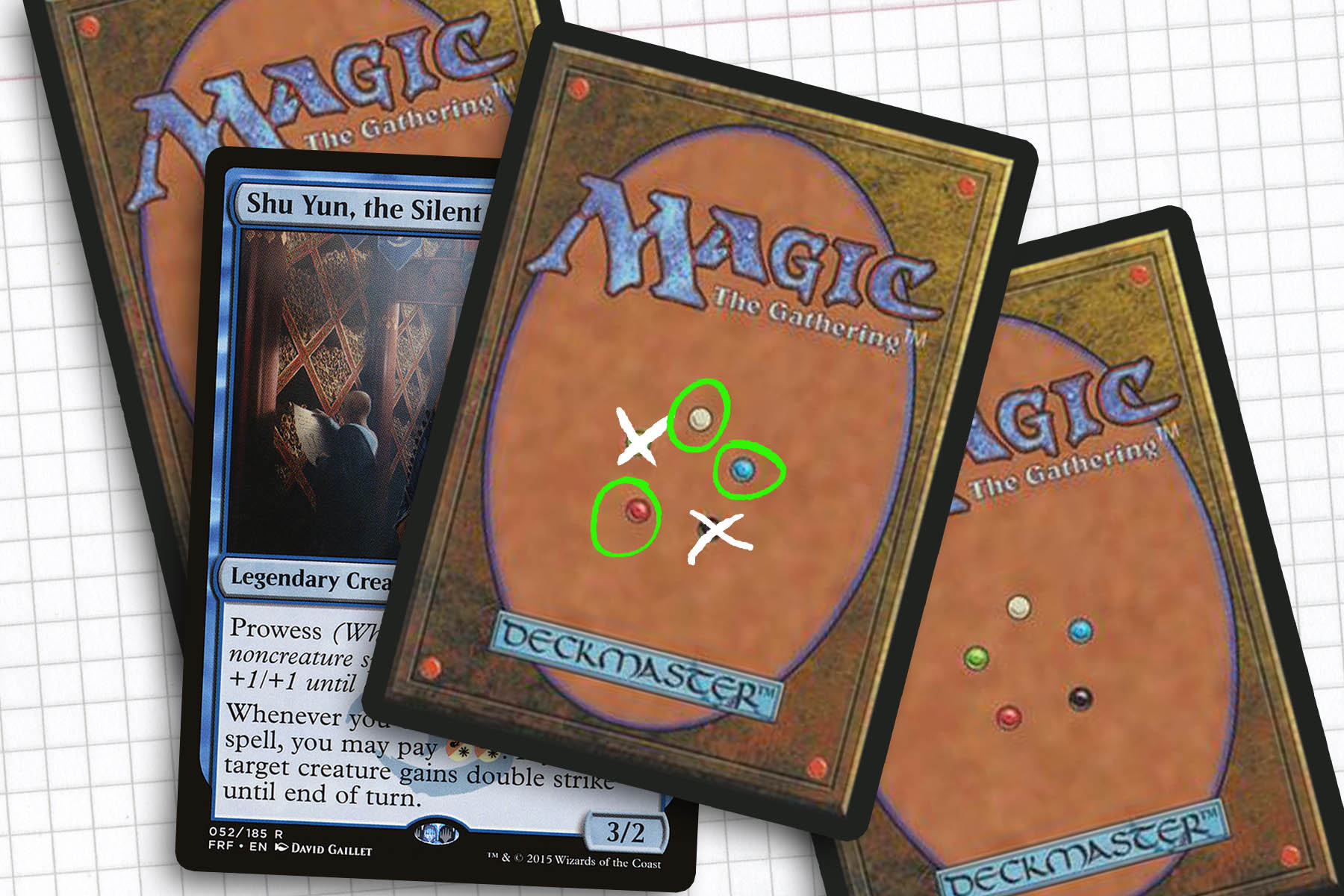
Deck Building in the Face of Adversity
As commander players, I think we all hit that point where we see a really cool suite of cards—in the form of a tribe or mechanic—and wish that Wizards had printed a general that meshed with it really well. In the current design age, legendary creatures get a lot of consideration and I would like to think that Wizards has learned from past mistakes. I don’t know that something like an Izzet artifact-matters commander would be overlooked while designing Kaladesh block. And any time we go to Innistrad, we’re likely to see an attempt at a werewolf general, though I am completely content with Tovolar, Dire Overlord, for the record.
So it was surprising to me that with reconfigure showing up in all five colors, we didn’t see a two or three color general that really made use of reconfigure, when it really doesn’t seem like it would have been so difficult to accomplish. This, of course, left me to my own devices, which was kind of freeing, because I was able to succeed or fail on my own merits.
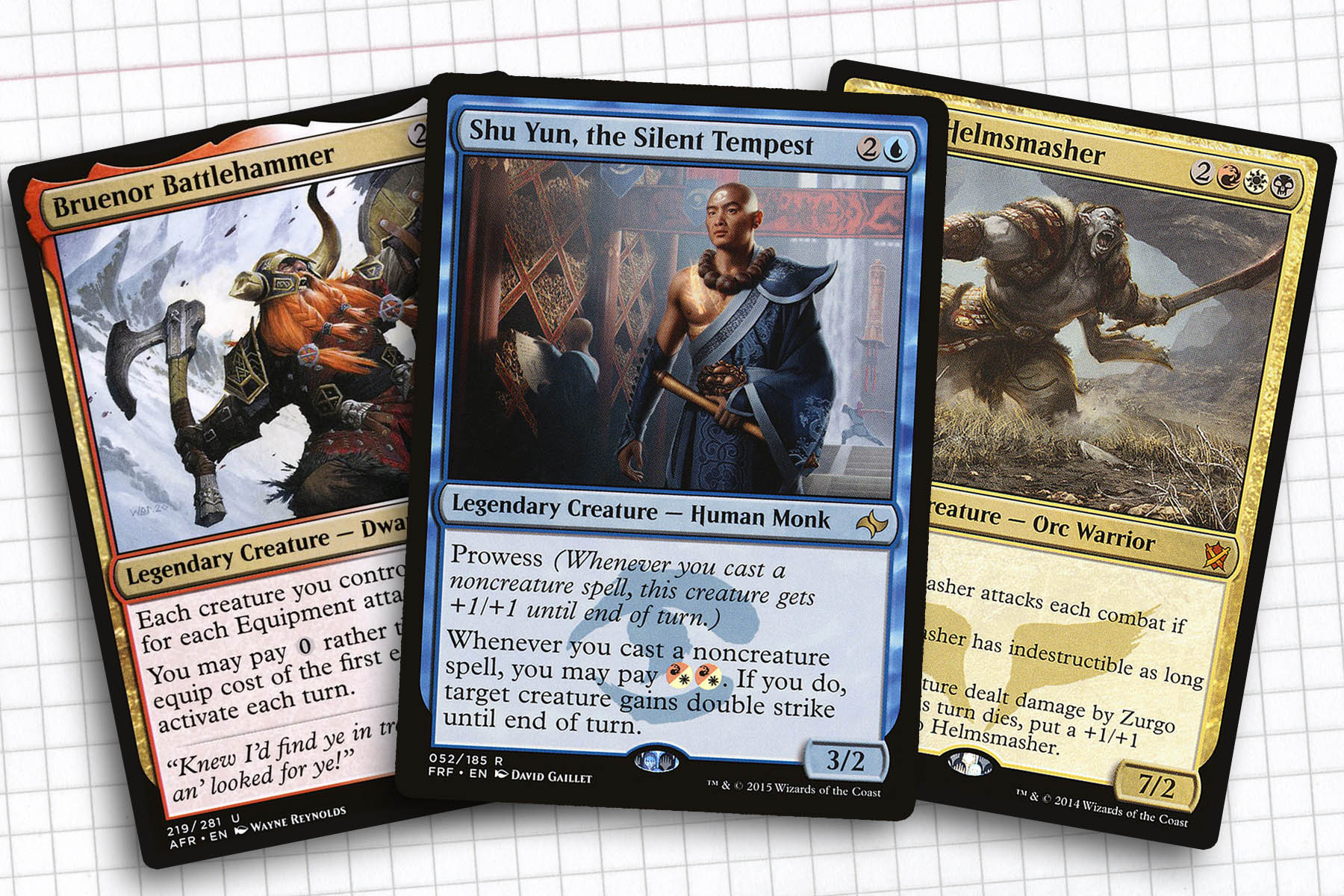
Configuring an Answer
A lot can go into the overall selection of a general: the available tools, the perception of the general or color combination within your metagame, all the way down to what flavor you may want to invoke with your card inclusions. In all honesty, the process for this week was very similar to my quest to find my Eldrazi deck. Thankfully, I had learned a few lessons from that experience which allowed me to condense the theory-crafting down to a much more sustainable timeframe this time around.
Back in 2015, I weighed my options between a slower, more controlling deck that would take advantage of exile effects and the processors through the lens of Jeleva, Nephalia’s Scourge, considering a reanimation strategy by brewing with both Sedris, the Traitor King and The Mimeoplasm. Ultimately around the time Shadows of Innistrad came out, I realized that just being a big old stompy deck in the Jund color identity fit my needs best with the Shattergang Brothers.
To take advantage of reconfigure, I wanted a general that could very easily feed into the Voltron angle that the mechanic was leaning towards, while not necessarily requiring that the general be a key piece that needed to be on the board to make the deck function. I wanted something that could easily interact with artifacts, would be able to protect itself, and could house “back-up” generals, allowing the deck to never be dead in the water without our commander.
At first, going down the path of Bruenor Battlehammer or Zurgo Helmsmasher seemed like a slam dunk, as either route could fit these needs. But it wasn’t too long before I began to question if adding blue might not be the better way to go, as Boros might not be able to stand on its own and really only Blade of the Oni interested me in the black reconfigure cards. Add to that the strength of artifact themes in the card pool, and suddenly Jeskai had me convinced as the best place to highlight the new mechanic.
Commander: Shu Yun, the Silent Tempest
Creatures: Acquisition Octopus, Alibou, Ancient Witness, Anger, Armguard Familiar, Balan, Wandering Knight, Bloodsworn Steward, Bronze Guardian, Bronzeplate Boar, Chief Engineer, Cloudsteel Kirin, Dalakos, Crafter of Wonders, Enthusiastic Mechanaut, Esior, Wardwing Familiar, Etherium Sculptor, Foundry Inspector, Jhoira, Weatherlight Captain, Kediss, Emberclaw Familiar, Keleth, Sunmane Familiar, Komainu Battle Armor, Lion Sash, Lizard Blades, Ogre-Head Helm, Rabbit Battery, Raff Capashen, Ship’s Mage, Replication Specialist, Ruin Grinder, Shimmer Dragon, Shimmer Myr, Simian Sling, The Reality Chip, Vedalken Archmage
Enchantments: Efficient Construction, Sigarda’s Aid
Planeswalkers: Saheeli, Sublime Artificer, Saheeli, the Gifted
Artifacts: Dowsing Dagger, Embercleave, Golem’s Heart, Grafted Exoskeleton, Hammer of Nazahn, Raugrin Crystal, Shadowspear, Skyclave Relic, Stoneforge Masterwork, Sword of the Animist, Talisman of Conviction, Talisman of Creativity, Weatherlight
Instants: Assert Authority, Faithful Mending, Metallic Rebuke, Override, Reality Heist, Thirst for Knowledge, Whir of Invention
Sorceries: Board the Weatherlight, Careful Study, Reverse Engineer, Ruthless Invasion, Saheeli’s Directive, Wake the Past, Whipflare
Lands: 13 Island, 6 Mountain, 2 Plains, Axgard Armory, Clifftop Retreat, Deserted Beach, Frostboil Snarl, Furycalm Snarl, Glacial Fortress, Hengegate Pathway, Mystic Monastery, Needleverge Pathway, Port Town, Raugrin Triome, Riverglide Pathway, Stormcarved Coast, Sulfur Falls, Sundown Pass, Witch’s Clinic
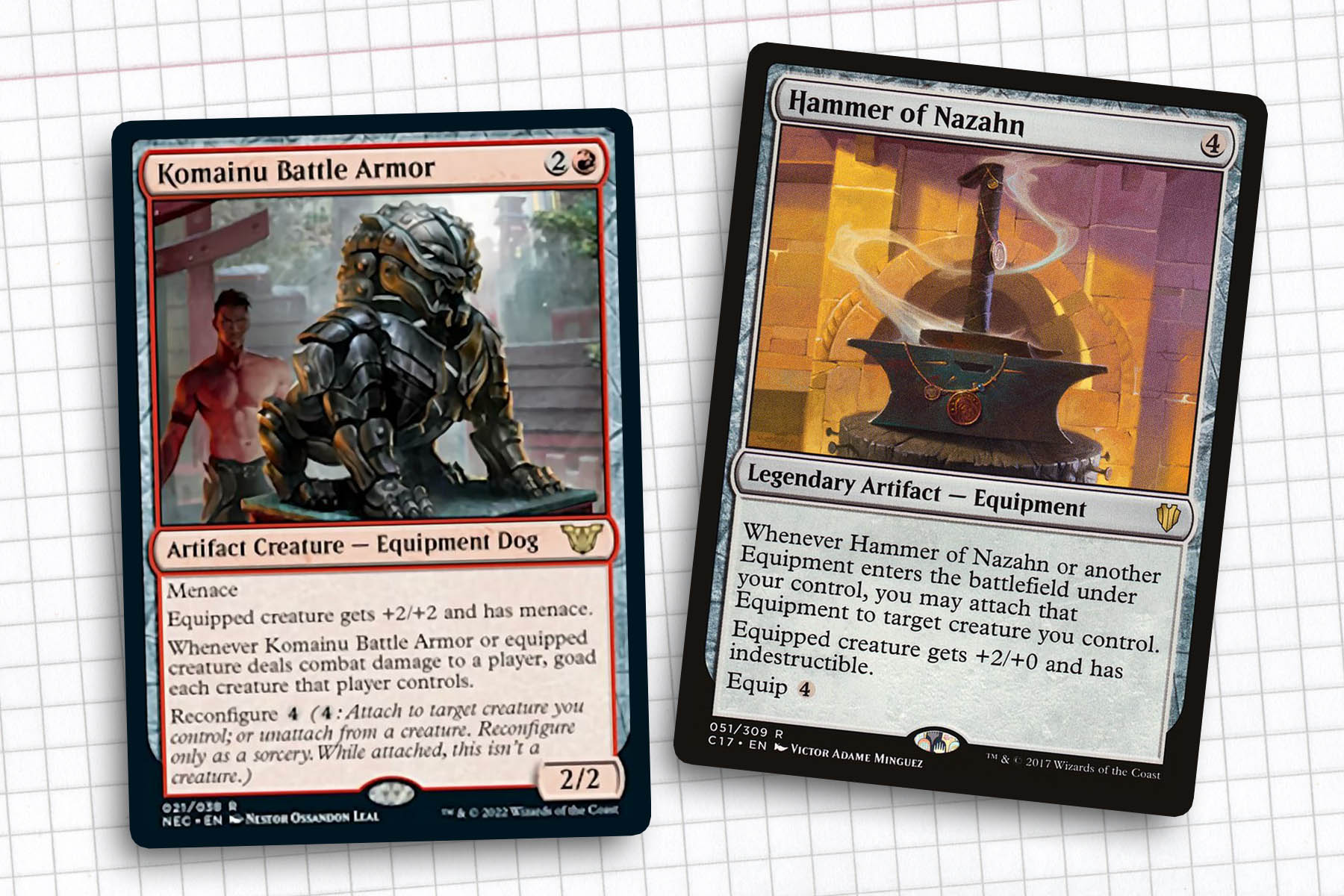
Cyberpunk Flying Crane Kick
Deciding to build around Shu Yun, the Silent Tempest came pretty easy, my history with the general had taught me that he allows for a very hands-off approach to card choices. Seeing as you really only need a single non-creature spell plus two available Boros mana to turn on double strike, it’s very easy for him to string together a quick Voltron victory if the situation calls for it. In this deck Balan, Wandering Knight, Jhoira, Weatherlight Captain, and Raff Capashen, Ship’s Mage act as strong second-in-command options, because of their strong interactions with equipment, making it easy to suit up, draw spells, and play at flash speed, respectively.
Focusing on Shu Yun; of the reconfigure spells on hand for the deck, Komainu Battle Armor and Bronzeplate Boar should work very well with our general, as menace and trample complement double strike. Of course, equipment creatures are not the only modifications we can make to Shu, Yun. Whether Embercleave is attaching itself or Hammer of Nazahn is bypassing the equip cost on Grafted Exoskeleton, we should be able to get away with only needing to cast our general in the end game and make it count. All of what we have planned for Shu Yun can easily be retemplated for any other creature in this deck—redundancy I’m happy to have.
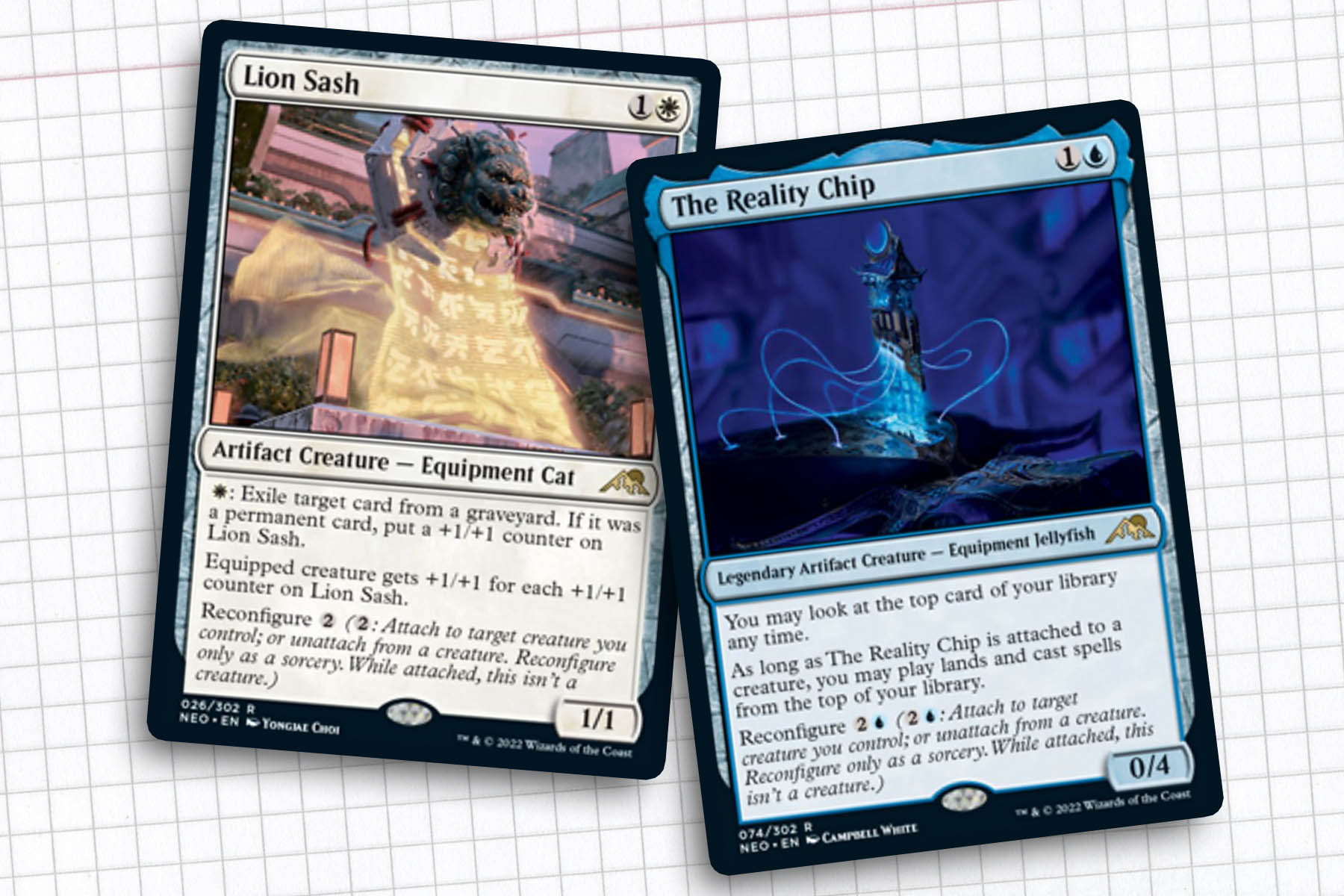
Suiting Up Everyone Else
The wonderful thing about reconfigure is that our creatures not only hold equipment, they are the equipment. This allows us to go wide or tall, depending on what the game requires of us. While I have never been too concerned about any equipment’s equip cost within the context of Commander, it is encouraging that almost all of the reconfigure costs in this deck fall at three or less mana. Cards like Acquisition Octopus and Rabbit Battery with analogs in Rogue’s Gloves and Strider Harness demonstrate how the cards can function in the deck. While neither card gets heavy play, the addition of body means that they are not useless as top decks after a board wipe.
The fun really starts when we look at more unique effects, like Cloudsteel Kirin making one of our creatures into Platinum Angel on-demand—still requiring some investment, but not at the same high profile. Lion Sash is being praised as a white Scavenging Ooze, which seems fitting and I will gladly have at my disposal. And finally we have The Reality Chip, which obviously is drawing comparisons to Future Sight; which, once again, I have no problem having it on hand as a bonus on my two-mana value creature. This backbone for the deck means that we should be able to play into the strong artifact themes in the rest of the deck to have a strong-resilient core.
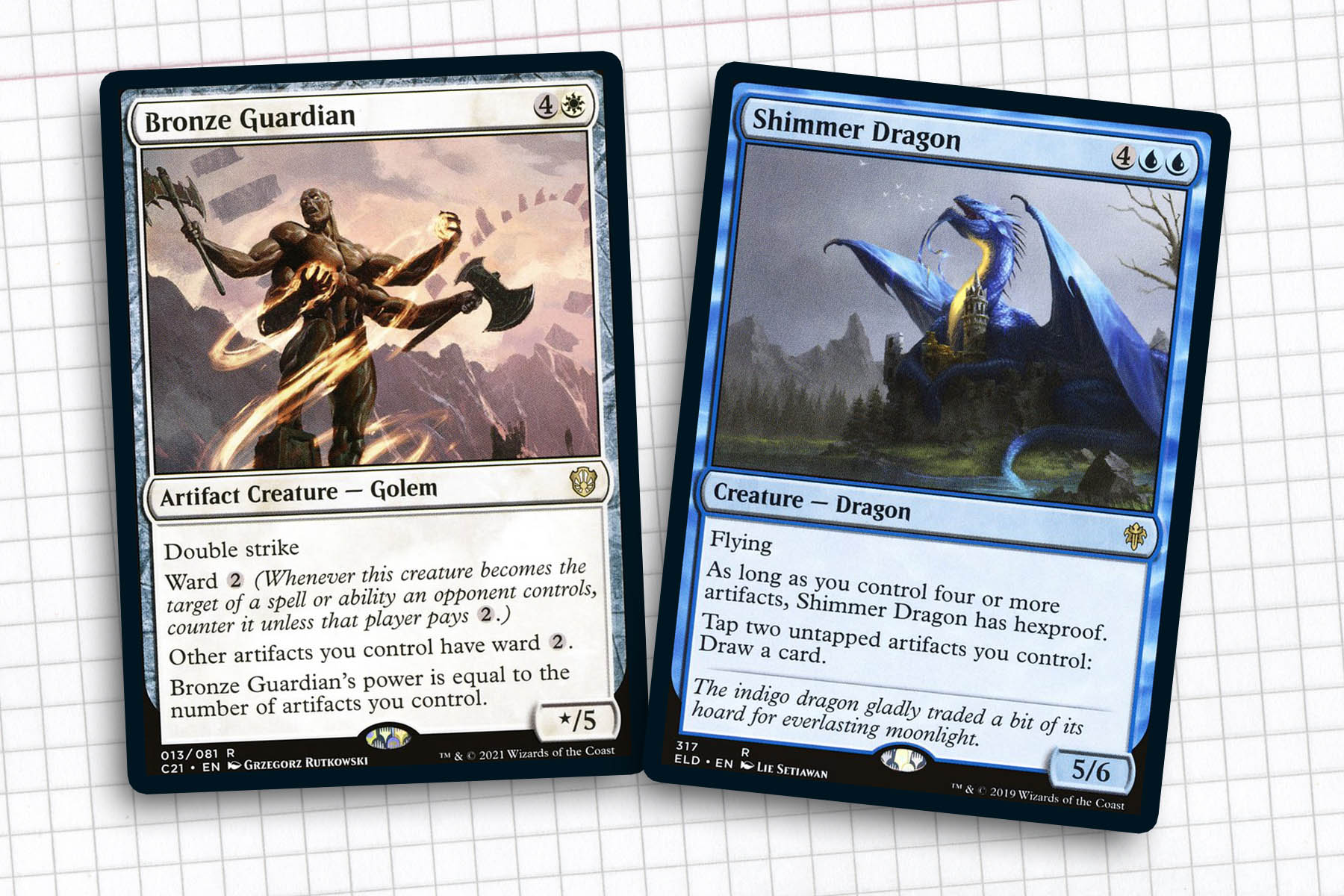
A Decent Artifact Strategy
Outside of all the card advantage generated by Jhoira or the combat trickery of Sigarda’s Aid, the Jeskai color identity has a strong suite of artifact-matters cards—some of which I’ve been excited to experiment with, but haven’t had the right deck until now. Right up front, Enthusiastic Mechanaut, Etherium Sculptor, and Foundry Inspector form the basis for a cost reduction that should only help to promote what we are looking to do, especially if we’re looking to string together artifact spells to dig for answers.
Alibou, Ancient Witness and Bronze Guardian are two cards that just fell short of my list of cards from 2021 I want to find places for in 2022, and should make impacts in this deck. Both are going to give us bonuses to our gameplay, while being valid targets for any equipment we may want to pass around. Similarly, Efficient Construction means that any artifact spells we cast will produce us a free flying body, another great place to attach equipment. And the additional card draw supplied by Shimmer Dragon and Vedalken Archmage will mean that we should not find ourselves empty handed.
Concluding Thoughts
Stepping back to look at what we have accomplished with this deck, I’m confident that there is something very entertaining to experiment with here. While there is always going to be room in a deck for revisions, I think this deck covers a lot of the pitfalls that can normally plague half baked ideas. These are the growing of finding the ideal general. I am proud of how this list evolved, going from concept to a final draft and I will be gleefully awaiting the pieces needed to build it in paper, once Neon Dynasty finally releases this weekend.
I don’t know that we will ever reach a point where I think that the designers of Magic should ever stop creating new mechanics. But I do hope that with the wealth of ancillary products that we get every year, they will examine mechanics that we are seeing in this current age of one-set trips to worlds and flesh some of them out in ways that just can’t happen when they’re competing for space in a Standard-legal set. Reconfigure is an interesting mechanic and while I am content with where we are for the purposes of this deck, another dozen cards spread out across the color identities would be a welcome surprise in the coming years.
Ryan Sainio is a Graphic Designer who writes about EDH and the EDH community. He has been playing Magic: the Gathering since 7th Edition in 2002 and values flavorful and fun gameplay over competitively optimized decks.

